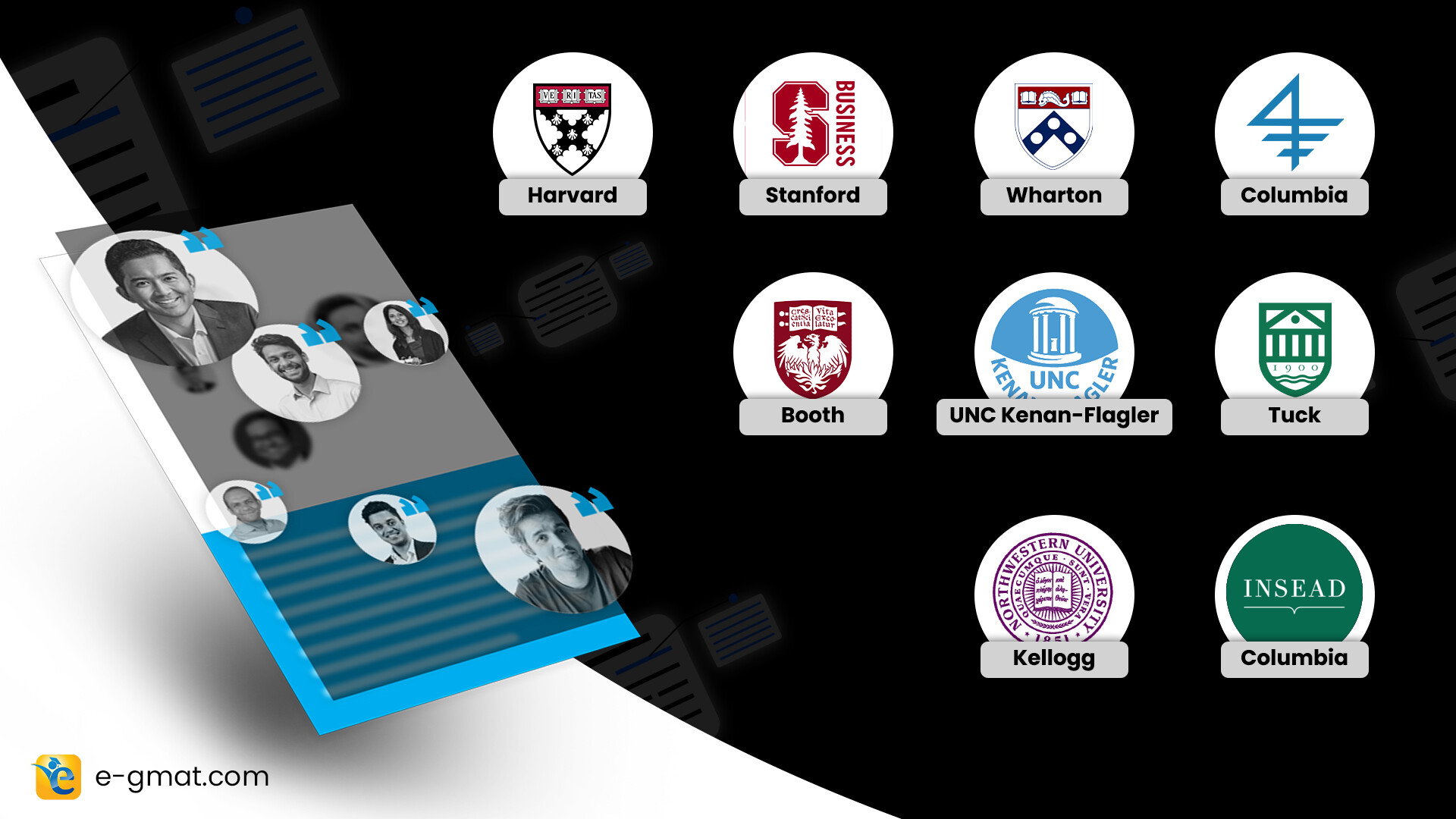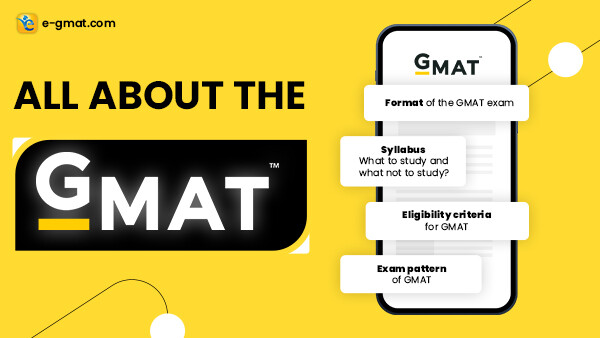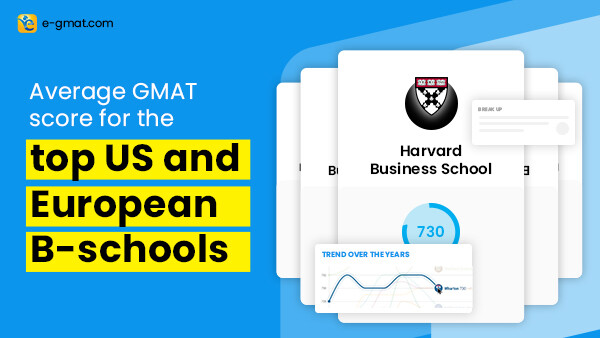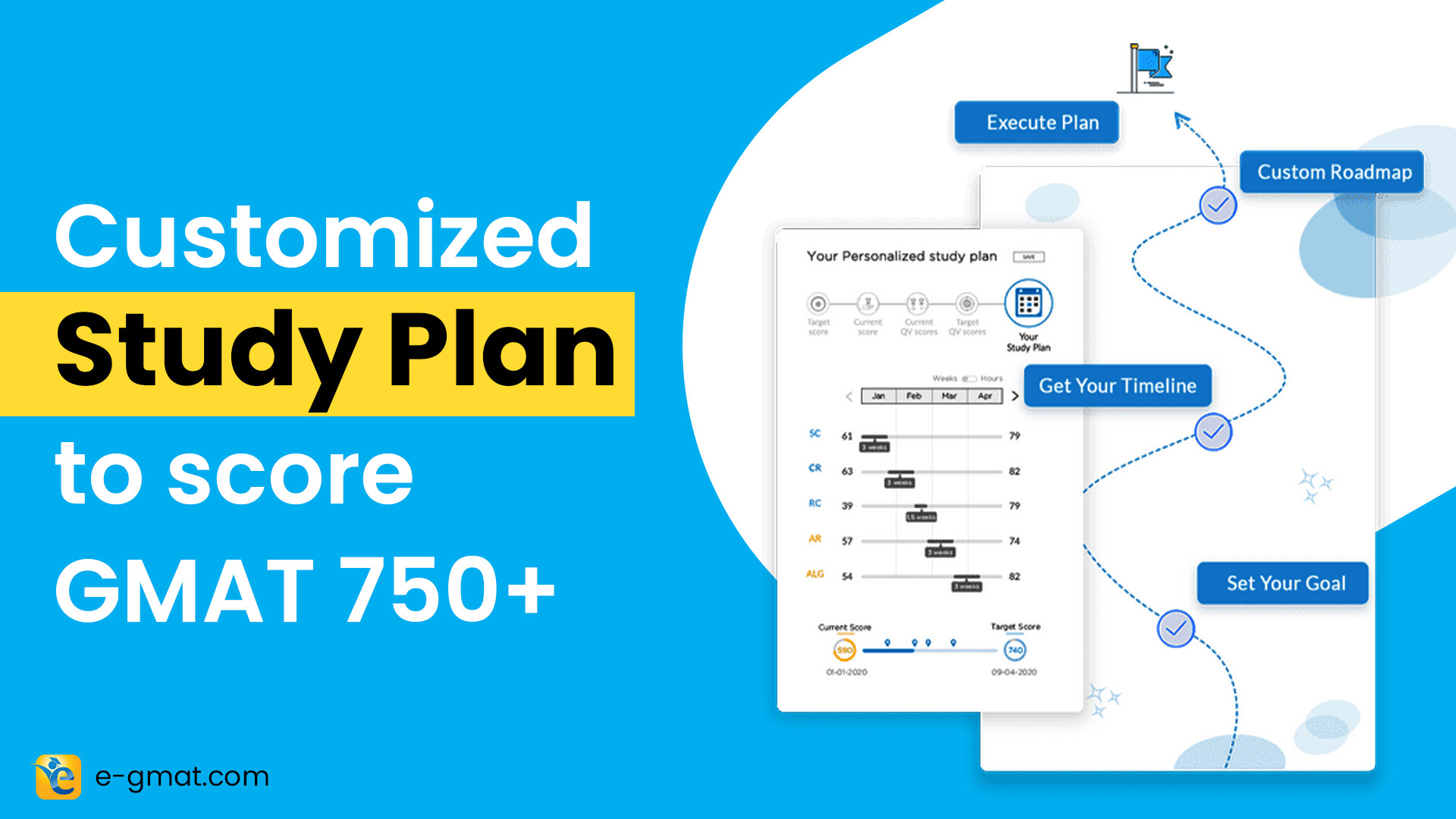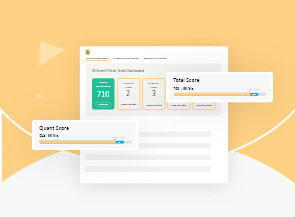The M7 business schools represent the most prestigious and selective MBA programs in the world. The term “M7” stands for “Magnificent Seven” and includes Harvard Business School, Stanford Graduate School of Business, Wharton (University of Pennsylvania), Columbia Business School, Chicago Booth, Northwestern Kellogg, and MIT Sloan. These elite institutions are grouped together due to their consistent top rankings, global brand recognition, and exceptional career outcomes.
Finding the right M7 business school involves looking beyond rankings to identify the program that best aligns with your career aspirations, learning preferences, and personal values. With acceptance rates below 15% and tuition investments exceeding $200,000, choosing the optimal M7 program requires thoughtful consideration of multiple factors.
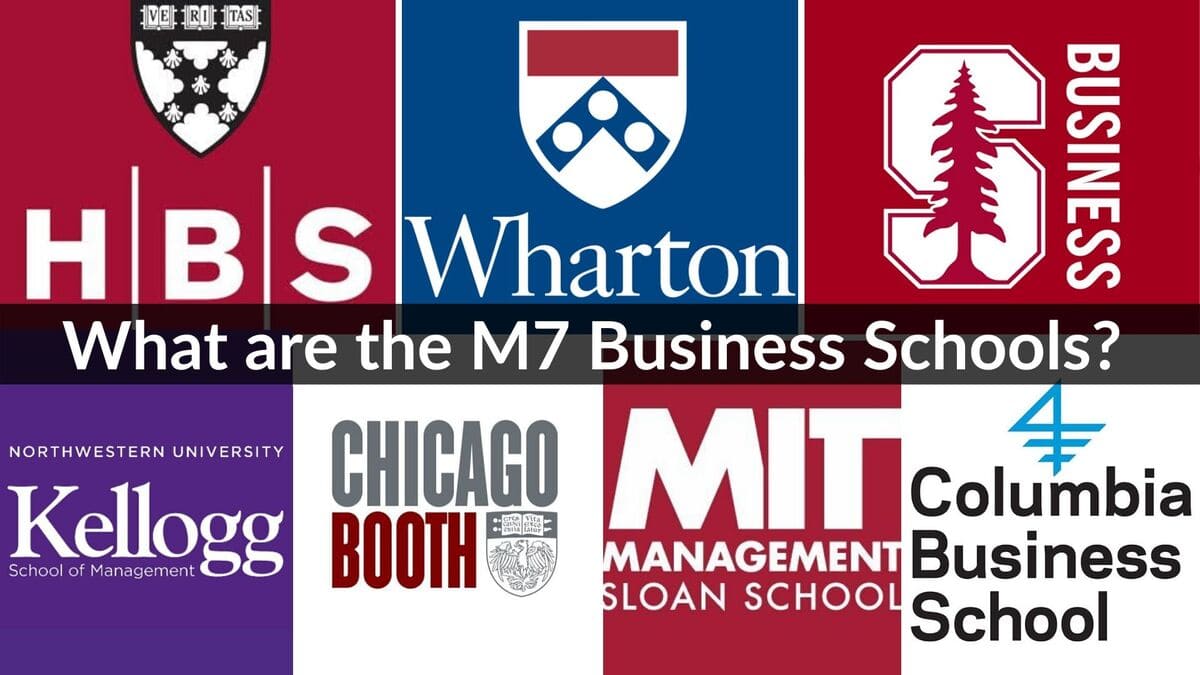
Throughout this guide, you’ll:
- Compare key differentiators across all seven elite programs
- Understand school-specific preferences beyond traditional metrics
- Align program selection with your post-MBA career ambitions
- Develop strategies to strengthen your candidacy for your target schools
A high GMAT score can set you apart from the competition and help you get an admit at your dream business school. Start your GMAT Preparation with the most reviewed online GMAT prep company. Try out our FREE Trial Today!
Read on to find the answers to some of the most pressing questions related to M7 Business schools, such as how to get into M7 Business schools, what their typical class profile and unique culture look like, and how to choose the right M7 for your MBA journey.
Find out how many students share your professional background in your dream B school:
In this article, we answer all these crucial questions from an applicant’s perspective and compare the M7 business schools by their unique programs, cultures, employment outcomes, and alumni.
- Beyond Rankings: Key Differentiators Among M7 Business Schools
- Decoding Admissions: What Each M7 Business School Truly Values
- Balancing Your Profile for M7 Admissions Success
- Career Outcomes: How M7 Business Schools Shape Professional Trajectories
- Career Services and Employer Relationships
- Making Your Final M7 Business School Decision
- FAQs
How do you increase your chances of getting an admit to Harvard, Stanford, Wharton and other M7 business schools?
Here are the 5 best practices for Indian applicants to get into M7 schools:
As mentioned earlier, at their biannual private sessions for which these M7 business schools rotate hosting duties, they trade gossip, best practices, and whatever topical issues end up on the agenda.
Was your b-school application rejected? Redefine Your MBA Application: Discover reapplicant strategies by reading our comprehensive article. – Reapplicant Strategies to Business Schools.
Watch how to make your MBA Application stand out while applying to these M7 business schools. Here is a playlist where candidates who got into M7 business schools share their application journey:
Beyond Rankings: Key Differentiators Among M7 Business Schools
When evaluating the M7 business schools, looking past rankings to understand their distinctive characteristics is essential for finding your ideal fit. Each institution offers world-class education, but their approaches differ significantly in structure, teaching philosophy, and culture.
M7 Business Schools Comparison: Class Profile & Curriculum Structure (2025)
| School | Class Size | Student-Faculty Ratio | Environment Feel |
| Harvard | 930 | 10:1 | Extensive network, energetic campus |
| Wharton | 866 | 9:1 | Large enough for diverse perspectives and extensive electives |
| Columbia | 972 | 9:1 | Substantial NYC-based community |
| Booth | 657 | 10:1 | Mid-sized with strong faculty access |
| Kellogg | 524 | 8:1 | Balanced community size |
| Stanford | 424 | 6:1 | Intimate community where everyone knows each other |
| MIT | 409 | 8:1 | Tight-knit, focused cohort |
Reflection Point: Do you thrive in larger, more dynamic environments, or do you prefer smaller, more intimate settings where you’ll know nearly everyone?
M7 Business Schools: International Exposure and Global Business Immersion
All M7 schools value global perspective, but their approaches differ:
| School | Program Type | Global Programs |
| Harvard | Required | • Required FIELD Global Immersion in first year |
| Wharton | Optional but Extensive | • Global Modular Courses in countries like Israel, India, Kenya • Exchange partnerships with 17 international schools |
| Columbia | Optional but Extensive | • Chazen Institute half-semester immersions • Global business projects |
| Booth | Optional but Extensive | • International Business Exchange with 30 partner schools • Student-organized global treks |
| Kellogg | Optional but Extensive | • Global Initiatives in Management (GIM) with field research • International consulting projects |
| Stanford | Required | • Mandatory Global Experience Requirement |
| MIT | Optional but Extensive | • Global Action Labs like G-Lab • Teams working with enterprises in emerging markets |
Reflection Point: How important is a structured international component to your MBA experience? Would you prefer a required global experience or the flexibility to choose?
Distinctive Cultural Identities of Each M7 Program
Harvard Business School
- Defining Feature: Case method cohesion & section system
- Community Structure: Tight-knit sections of ~90 peers
- Cultural Values: Confident articulation, active listening, leadership
- Atmosphere: Competitive yet collegial
- Traditions: Cold calls, section retreats, Harvard Ball
- Campus Feel: Historic buildings, legacy of business leadership
Stanford GSB
- Defining Feature: Entrepreneurial mindset & Silicon Valley ecosystem
- Atmosphere: Informal, optimistic (“Think big, why not?”)
- Cultural Values: Intellectual humility, authenticity, innovation
- Community Dynamic: First-name basis with faculty, flat hierarchies
- Traditions: GSB Show (comedy musical), TALK sessions
- Distinctive Ethos: “Pay-it-forward” mentality and personal growth
Wharton
- Defining Feature: Analytical rigor with collaborative community
- Learning Structure: Institutionalized collaboration via learning teams
- Campus Dynamic: Diverse subcultures from finance to social impact
- Cultural Motto: “Competing together against the problem, not each other”
- Community Centers: Huntsman Hall as social-academic hub
- Balance: Strong school spirit alongside academic excellence
Kellogg
- Defining Feature: Warm, collaborative culture
- Well-Known Trait: “Kellogg people are nice”
- Leadership Philosophy: “Low-ego, high-impact leadership”
- Student-Led Identity: Second-years running pre-MBA programs
- Campus Setting: Lakefront Global Hub facilitating community
- Special Strength: Marketing excellence and social engagement
Chicago Booth
- Defining Feature: Intellectual freedom & rigorous inquiry
- Classroom Dynamic: Lively debates continuing after class
- Student Traits: Independent, intellectually curious
- Community Ethos: “Pay-it-forward” mentoring
- Balance: Independence with strong mutual support
- Cultural Value: Data-driven decision making
Columbia Business School
- Defining Feature: NYC-influenced pace and ambition
- Daily Rhythm: Morning classes, downtown networking
- Positioning: “At the very center of business”
- Historical Strength: Finance, especially value investing
- Community Structure: More distributed due to city living
- Identity Blend: Ivy League pedigree with New York hustle
MIT Sloan
- Defining Feature: Innovation with analytical foundation
- Community Profile: “Brilliant but down-to-earth” peers
- Mission Focus: Developing principled, impact-driven leaders
- Collaboration Model: Cross-MIT partnerships with engineers and scientists
- Entrepreneurial Style: Technical, solution-oriented ventures
- Cultural Tradition: Weekly C-functions celebrating diversity
Reflection Point: Which cultural description resonates most with your working style and values? Can you imagine yourself thriving in this environment for two years?
Student Leadership, Activities & Alumni Networks
Comparison: Student Activities & Alumni Networks
| School | Student Leadership & Activities | Alumni Networks |
| Harvard | • 200+ clubs spanning all interests • Section-based activities (Section Olympics) • Student Association liaising with faculty • Major events like Holidazzle winter party | • One of the largest networks (~85,000 alumni) • Global reach across all industries • Alumni known for strong school identification |
| Stanford | • All-class traditions like GSB Show • Weekly TALK personal story sessions • Small cohort enabling high participation rates | • Smaller but exceptionally responsive network • “GSB Mafia” presence in Silicon Valley • Particularly strong in tech and venture capital |
| Wharton | • 200+ clubs with global-scale conferences • Industry conferences drawing international attendance • Extensive leadership opportunities by second year | • One of the largest networks (~95,000 alumni) • Global reach across all industries |
| Kellogg | • Collaborative events like famous Ski Trip • Special K! variety show • Kellogg Fellows mentoring program | • Famous for alumni responsiveness • “Return your call the same day” reputation • Formal mentorship programs connecting generations |
| Booth | • Booth Follies and pre-MBA Random Walks • “Pay-it-forward” training for first-years • Second-year coaching on recruiting strategies | • Growing network engagement (57,000+ globally) • Strong pay-it-forward culture • Significant investment in alumni career services |
| Columbia | • Access to broader Columbia University network • Cluster system (groups of ~70) for community • Industry visits leveraging NYC location | • NYC and finance concentration • Exceptional density in New York financial sector • Strong international representation in Asia and Latin America |
| MIT Sloan | • Cross-disciplinary initiatives with MIT departments • Student-run Sloan Sports Analytics Conference • Weekly C-functions celebrating international diversity | • Dual Sloan/MIT identification • Particularly active in tech, operations, entrepreneurship • “Ask an Alum” formalized connection platform |
Final Reflection: Beyond academics, which school community best aligns with your personality, interests, and long-term network needs? How might these different environments shape your two-year MBA journey?
Decoding Admissions: What Each M7 Business School Truly Values
The Secret Language of M7 Business Schools
The M7 business schools represent the most selective business schools in the world. While their published requirements tell part of the story, each program has subtle preferences that can make or break your application. Understanding these “unwritten rules” could be your competitive edge in a crowded applicant pool.
The Numbers Game: GMAT, GRE, and GPA Expectations
Each M7 business school evaluates traditional metrics through their unique lens:
| School | Average GMAT score | Average GPA | What They Really Value | International Students |
| Harvard | 740 (median) | 3.73 | • Leadership presence • Impact in your community • Authentic self-awareness | 35% |
| Wharton | 732 | 3.68 | • Analytical horsepower • Team contribution skills • Measurable achievements | 31% |
| Columbia | 732 | 3.60 | • NYC-ready pace and drive • Professional maturity • Clear career direction | 46% |
| Chicago (Booth) | 728 | 3.60 | • Intellectual curiosity • Data-driven thinking • Independent perspectives | 36% |
| Northwestern (Kellogg) | 733 | 3.72 | • Collaborative leadership • Interpersonal intelligence • Community builders | 40% |
| Stanford GSB | 738 | 3.77 | • Intellectual vitality • Purpose-driven leadership • Personal growth journey | 39% |
| MIT (Sloan) | 729 | 3.61 | • Analytical problem-solving • Innovation mindset • Evidence-based leadership | 40% |
Quality Over Quantity: Work Experience and Leadership Potential
The average work experience at M7 business schools is about 5 years, but what you’ve accomplished matters far more than how long you’ve worked.
What makes experience M7-worthy:
- Fast-track promotions that outpace peers
- Leadership impact with measurable results
- Problem-solving that changed your organization
- Recognition from senior leadership
School-specific experience preferences:
- Harvard: Seeks “habit of leadership” across all experiences
- Stanford: Values impact and potential to drive meaningful change
- Booth/Wharton: Prioritize analytical problem-solving prowess
- Kellogg: Looks for collaborative leadership examples
- MIT: Values innovative approaches to complex problems
Admissions committees evaluate whether you’ve reached a logical point for MBA education and how your background will enrich classroom discussions.
Your GPA in Context: How M7 Business Schools Really See Your Academics
M7 schools evaluate your GPA within several important contexts:
- School rigor: A 3.5 from an elite university may outweigh a 3.9 from a less rigorous program
- Major difficulty: Engineering or physics majors often get more leeway than business majors
- Grade trends: Upward trends show growth and resilience
- Post-college academics: Additional coursework can offset undergraduate weaknesses
If your GPA is below average:
- Strong GMAT/GRE quantitative scores become crucial
- Consider taking supplemental courses in statistics, economics, or finance
- Highlight quantitative achievements in your professional work
Quantitatively rigorous programs like Wharton, MIT Sloan, and Booth pay particular attention to mathematical preparation throughout your academic history.
Your Next Steps: Putting These Insights to Work
Understanding these unwritten rules is just the beginning. As you craft your applications:
- Self-assess honestly against each school’s unique preferences
- Highlight experiences that align with each program’s values
- Address gaps proactively before they become objections
- Craft school-specific narratives that showcase your fit with each program’s culture
Did you know a GMAT score of 730+ yields incremental $500K in ROI? Start your GMAT Preparation by Signing up for our FREE Trial and get access to FREE online GMAT preparation resources. We are the most reviewed GMAT preparation company on GMATClub with more than 2600 reviews.
Balancing Your Profile for M7 Admissions Success
Strategies to Compensate for Below-Average Metrics
If your GMAT/GRE or GPA falls below a school’s average, consider these strategies:
| Area of Concern | Strategies to Address |
| Lower Quantitative Indicators | ✅ Highlight quantitative excellence in your work (financial modeling, data analysis) ✅ Take additional courses in statistics or accounting and earn A’s ✅ Pursue relevant certifications (CFA, Six Sigma) to demonstrate analytical ability |
| Lower GPA | ✅ Use the optional essay to briefly explain circumstances (without excuses) ✅ Point to recent evidence of academic ability ✅• Seek strong recommendations that specifically address your analytical capabilities |
| Less Prestigious Undergraduate Institution | ✅ Emphasize exceptional performance within your context (being top of your class or department) ✅ Highlight professional accomplishments that demonstrate intellectual horsepower |
| Test Anxiety or Multiple Attempts | ✅ Remember schools consider your highest score ✅ Persistence in improving can demonstrate determination ✅ Consider including brief notes about significant score improvements |
The key is demonstrating self-awareness about potential concerns while providing evidence that contradicts negative assumptions. As a former HBS admissions officer notes: “We’re looking for reasons to admit, not reasons to deny. Show us evidence that challenges the limitations a number might suggest.”
Aligning Your Profile with Each M7 School’s Unique Identity
Each M7 business school has distinct programs, values, and strategic initiatives. Thoughtfully connecting your background and goals to these priorities signals fit:
- Research centers and initiatives: Mention specific school resources that align with your interests—Wharton’s ESG Initiative, Kellogg’s Center for Science of Science & Innovation, Booth’s Rustandy Center for Social Sector Innovation, etc.
- Teaching approach: Explain why a particular school’s pedagogy suits your learning style—Harvard’s case method, Booth’s flexible curriculum, or MIT’s action learning.
- Community values: Demonstrate alignment with the school’s culture—Kellogg’s collaborative leadership, Stanford’s emphasis on personal values, Columbia’s New York advantage.
- Career resources: Connect your goals to the school’s strengths in specific industries or functions, referencing employment reports and alumni success stories.
The key is specificity—generic statements about “world-class faculty” or “global reputation” apply to all M7 business schools and signal you haven’t done your homework. Instead, cite particular professors, courses, clubs, and initiatives that directly connect to your goals and interests.
Career Outcomes: How M7 Business Schools Shape Professional Trajectories
Selecting the right M7 business school is about more than just rankings or brand recognition—it’s about finding the program that will best propel you toward your specific career goals. With acceptance rates hovering below 15% and tuition investments exceeding $200,000, the stakes couldn’t be higher. Your MBA choice will shape not only your two years as a student but your entire professional trajectory.
Industry Placement Strength Comparison
When evaluating M7 business schools, understanding their placement track records across different industries provides crucial insights into where you might land post-MBA.
Key Insights from Recent Placement Data:
- Harvard places the highest percentage (35%) into finance roles, with particularly strong private equity outcomes (17%)
- Stanford shows the strongest entrepreneurship outcomes (25%) but has seen recent decreases in tech placements
- Wharton maintains strong finance placements (37.3%) with growing tech representation
- Kellogg leads in consulting placements (42%) while growing its tech recruiting pipeline
- Booth maintains balanced strength across consulting (38.6%) and finance (32.6%)
- Columbia shows finance dominance (35.7%) with decreasing tech placements
- MIT Sloan demonstrates the most balanced distribution across sectors
Here is the list of articles on top business schools in:
Top Business Schools in Consulting
Top Business Schools in Finance
M7 Recruitment Patterns Across Industries:
Here is a comparison of top industries for each school’s latest MBA graduating class (2023):
| School | Consulting | Financial Services | Technology | Notable Details |
| Harvard | 25% | 35% | 16% | Consulting dropped from 25%; 19% specifically in private equity |
| Stanford GSB | 15% | 38% | 24% | Silicon Valley location; Tech slightly down from 24% |
| Wharton | 28.8% | 37.3% | 17.2% | Strong financial services focus |
| Columbia | 36.3% | 35.7% | 10.8% | 16% specifically in investment banking/brokerage; Tech/media fell from ~26% in 2020 |
| Chicago (Booth) | 38.6% | 32.6% | 15.5% | Strong consulting pipeline |
| Northwestern (Kellogg) | 42% | 22% | 17% | Highest consulting placement among M7; Tech placements increased from 17% |
| MIT (Sloan) | 19.9% | 33.7% | 24.1% | More tech-oriented focus |
Entrepreneurship Support & Outcomes
For aspiring entrepreneurs, the differences across M7 business schools are particularly striking:
- Stanford GSB: An incredible 23% of Stanford’s 2024 graduates launched their own ventures immediately after graduation
- Harvard: 14% of the 2024 class chose entrepreneurship over traditional employment
- MIT Sloan: Known for tech entrepreneurship, with strong support systems through programs like the $100K Launch competition
All M7 business schools offer entrepreneurship resources, but Stanford’s Silicon Valley ecosystem, GSB’s Startup Garage course, and access to venture capital make it exceptionally conducive to startup founders.
Stanford GSB and Harvard rank #1 and #2 respectively in Entreprenuership. You can check out our article on the top 7 business schools for Entrepreneurship in 2023 and what makes them unique.
Emerging Industries & Specialized Paths
Beyond the traditional MBA career paths, each M7 business school has developed niches in emerging sectors:
- Healthcare: Claims about 5-6% of Harvard, Wharton, and Stanford graduates, but reaches nearly 9% at Kellogg
- Social Impact: Strong representation at schools like Kellogg and Harvard
- Sustainability: Growing presence at Stanford and MIT Sloan
- Luxury & Retail: Columbia leverages its NYC location for strong retail industry connections, while Kellogg maintains a historical strength in consumer marketing leadership.
These specialized pathways often reflect each school’s broader focus and strengths in related academic disciplines.
Career Services and Employer Relationships
The support system each MBA program offers for navigating your career search significantly influences your outcomes. Here’s how the M7 schools compare:
| Career Service Feature | Harvard | Stanford | Wharton | Booth | Kellogg | Columbia | MIT Sloan |
| Employer Relationships | ★★★★★ 300+ recruiting companies | ★★★★☆ Focus on tech & startups | ★★★★★ 350+ recruiting companies | ★★★★☆ Strong midwest connections | ★★★★★ Consulting partnerships | ★★★★★ Wall Street connections | ★★★★☆ 276 different hiring firms |
| Career Advisor Ratio | ★★★★☆ 1:40 students | ★★★★★ 1:35 students | ★★★★☆ 1:40 students | ★★★★☆ 1:38 students | ★★★★★ 1:32 students | ★★★☆☆ 1:45 students | ★★★★☆ 1:40 students |
| Interview Preparation | ★★★★★ Case prep excellence | ★★★★☆ Tech interview focus | ★★★★★ Industry-specific bootcamps | ★★★★★ Data-driven feedback | ★★★★★ Peer coaching structure | ★★★★☆ Finance technical prep | ★★★★☆ Technical interview focus |
| Alumni Career Support | ★★★★★ Lifelong access | ★★★★★ Strong founder network | ★★★★☆ Global alumni clubs | ★★★★☆ Industry-specific networks | ★★★★☆ Regional alumni groups | ★★★★☆ NYC network strength | ★★★★☆ Tech alumni connections |
| Career Trek Programs | ★★★★☆ Global company visits | ★★★★★ Silicon Valley access | ★★★★☆ Industry-specific treks | ★★★★☆ Private equity focus | ★★★★★ 25+ global treks annually | ★★★★☆ Wall Street access | ★★★★☆ Tech company focus |
Your Network to Top Employers: Recruitment Models & Relationships
While all M7 schools attract elite employers, their recruitment approaches differ:
| Business School | Recruiting Relationships |
| Harvard & Wharton | Host extensive on-campus recruiting with dozens of Fortune 500 companies and consulting firms |
| Columbia & Wharton | Maintain particularly deep relationships with investment banks and funds, leveraging their East Coast location |
| Kellogg & Booth | Feature longstanding relationships with top consulting firms and Chicago-based corporations |
| Stanford | Places greater emphasis on network-driven recruiting, with fewer students going through traditional on-campus recruitment and more finding opportunities through alumni connections in the Bay Area |
| MIT Sloan | Cultivates relationships with technology and biotech firms, reporting 276 different hiring companies for recent classes |
Reinvent Your Career: Support Systems for Career Switchers
Given that most MBA students pivot careers, M7 programs have developed robust support for career switchers:
- Wharton: Specialized support through finance clubs for those transitioning into banking, with second-year coaches who made similar switches
- Booth: Flexible curriculum enabling immediate specialization for career changers
- MIT Sloan: “Learning by doing” approach through action labs allowing switchers to gain relevant experience
- Kellogg: Career treks (site visits) to help students explore new industries firsthand
- Columbia: Intensive skill-building workshops for those entering finance from other backgrounds
These programs help overcome the “experience gap” that career switchers often face, making the transition smoother and more successful.
Making Your Final M7 Business School Decision
The journey to M7 admission requires strategic self-assessment, thorough program research, and thoughtful application positioning.
By understanding your own candidacy through our assessment framework, comparing programs based on their distinctive attributes, decoding the unique preferences of each school, and aligning your choices with your career aspirations, you can develop a targeted approach that maximizes your chances at these elite institutions.
While all M7 business schools offer exceptional preparation for elite business careers, their unique emphasis creates different pathways to success:
- Harvard: Comprehensive general management training through case method, with exceptional alumni reach
- Stanford: Intimate, values-driven program with unmatched entrepreneurial outcomes
- Wharton: Analytical rigor with curriculum flexibility and finance leadership
- Kellogg: Collaborative approach with consulting excellence and team leadership focus
- Booth: Flexible, inquiry-driven curriculum with quantitative emphasis
- Columbia: Finance-oriented program with strong New York connections
- MIT Sloan: Action-based learning with technology and innovation focus
Remember that “fit” works both ways – these institutions seek candidates who will both benefit from and contribute to their unique environments. The most successful applicants not only meet the qualification thresholds but also clearly articulate their authentic connection to each program’s distinctive culture and opportunities.
As you evaluate M7 business schools for your MBA journey, focus on finding the program that best aligns with your career goals, learning preferences, and personal values—not just the highest-ranked option. Your success both during and after your MBA will depend far more on fit than on rankings.
Planning to take the GMAT? We can give you access to quality online content to prepare. We are the most reviewed GMAT prep company on the GMAT club with more than 2600+ reviews and have delivered 10x 700+ scores than the average GMATClub partner. Why don’t you take a free trial and judge it for yourself? Write to us at acethegmat@e-gmat.com in case of any queries.
Also, read our detailed articles on each M7 Business School, which include the latest data about their class profiles, employment reports, and salaries:
- Harvard Business School – Class Profile, Employment Reports, and Salaries
- Stanford GSB – Class Profile, Employment Reports, and Salaries
- Wharton School of Business – Class Profile, Employment Reports, and Salaries
- Columbia Business School – Class Profile, Employment Reports, and Salaries
- Kellogg School of Management – Class Profile, Employment Reports, and Salaries
- Chicago Booth School of Business – Class Profile, Employment Reports, and Salaries
- MIT Sloan School of Management – Class Profile, Employment Reports, and Salaries
FAQs
The M7 (Magnificent Seven) refers to the seven most prestigious and selective MBA programs in the world: Harvard Business School, Stanford Graduate School of Business, Wharton (University of Pennsylvania), Columbia Business School, Chicago Booth, Northwestern Kellogg, and MIT Sloan. These elite institutions are characterized by their exceptional global reputation, rigorous admissions standards (with acceptance rates below 15%), comprehensive career outcomes, and influential alumni networks.
The M7 designation isn’t an official organization but rather an informal recognition of these schools’ consistent top rankings and similar peer positioning in the MBA landscape.
Choosing between Harvard and Stanford for an MBA depends on your career goal. There are many factors on which you can compare both. Here are the parameters to analyze while comparing Stanford and Harvard
Location and Class Profile
Placement and Internship Opportunities
Ranking Lists
MBA Program Focus
MBA Program and Curriculum
Teaching Methods, Experiential Learning, and Global Opportunities
Admission Process and Cost of Attendance
Alumni Network
Scholarship Programs
Facilities
To help you decide whether to go for the Kellogg or Booth MBA program. Here are the parameters to analyze Kellogg vs. Booth:
Class Profile
MBA Program Focus
Ranking Lists
MBA Program and Curriculum
Teaching Methods, Experiential Learning, and Global Opportunities
Placement and Internship Opportunities
Admissions Process and Cost of Attendance
Alumni Network
Scholarship Programs
Facilities
For competitive consideration at M7 business schools, your GMAT score should ideally fall within the 685-735 range, with higher scores substantially strengthening your candidacy.
According to the latest class profile data, each M7 school has slightly different median scores: Harvard (740), Stanford (738), Wharton (732), Kellogg (733), Chicago Booth (728), Columbia (732), and MIT Sloan (729).
While these schools review applications holistically, hitting or exceeding your target school’s median removes a potential obstacle and allows other parts of your story to take center stage in the evaluation process. Street), New York
Getting into M7 business schools requires understanding what each program truly values beyond their published requirements:
Target competitive numbers: Aim for a GMAT score within 20 points of your target school’s median (around 730-740 for most M7s) and a GPA close to their average (3.6-3.8).
Demonstrate quality experience: Focus on impact rather than years worked. Highlight fast-track promotions, leadership achievements with measurable results, and recognition from senior management.
Understand each school’s “secret language”: Harvard seeks the “habit of leadership,” Stanford values “intellectual vitality,” Wharton looks for “analytical horsepower,” and Kellogg prizes “collaborative leadership.”
Address profile gaps proactively: Use optional essays to explain weaknesses, take additional courses to demonstrate quantitative ability, or highlight exceptional professional achievements.
Showcase school-specific fit: Research each program’s distinctive culture, teaching approach, and initiatives. Reference specific professors, courses, and clubs that align with your goals.
Leverage your unique background: Highlight “spikes” or distinctive elements that make your application memorable, whether from underrepresented industries, specialized expertise, or unusual combinations of experiences.
Learn what it takes to get into top business schools.
All M7 schools accept both the GMAT and GRE with no stated preference, but there are some nuances to consider.
The GMAT has historically been the predominant test for MBA admissions, which is why more detailed statistical benchmarks (like the school-specific medians) are readily available for GMAT scores. A strong GMAT Quant score might better showcase your analytical abilities if you’re targeting quantitatively rigorous programs like Wharton, MIT Sloan, or Booth.
However, suppose you excel at verbal reasoning or already have a strong GRE score from other graduate school applications. In that case, the GRE remains a perfectly valid option that won’t disadvantage your candidacy at any M7 program. You can learn more about the nuanced differences between GMAT and GRE here.
M7 schools show distinctive industry placement patterns that reflect their unique strengths and locations:
Consulting: Kellogg leads with 42% of graduates entering consulting, followed closely by Booth (38.6%) and Columbia (36.3%). These schools are renowned for their case interview preparation resources and strong relationships with top firms.
Finance: Wharton dominates with 37.3% of graduates entering financial services, closely followed by Stanford (38%) and Columbia (35.7%).
Technology: Stanford (24%) and MIT Sloan (24.1%) lead in tech placements, leveraging their proximity to innovation hubs.
For specialized paths like entrepreneurship, Stanford stands out with 23% of graduates launching ventures, compared to Harvard’s 14%.
Each M7 school has a distinctive culture and set of strengths:
Harvard Business School: Defined by its case method, section system, and emphasis on confident leadership
Stanford GSB: Known for its entrepreneurial mindset, intellectual humility, and Silicon Valley ecosystem.
Wharton: Combines analytical rigor with collaborative learning through structured teams. Known for quantitative excellence, diverse subcultures from finance to social impact, and one of the largest alumni networks (~95,000).
You can learn about the distinct cultural identities of each school in this section of the article.
Undergraduate GPA remains an important factor in M7 admissions, but it’s evaluated within a nuanced context.
If your GPA falls below your target school’s average, you should consider strategies to strengthen other aspects of your application, such as achieving a strong GMAT/GRE score (particularly in the quantitative section), taking supplemental courses, or highlighting quantitative achievements in your professional work.
Whether it’s worth retaking a 700+ GMAT depends on several factors related to your specific profile and target schools:
If you have a 700-720 GMAT, a retake is likely worthwhile for most M7 applications, as this score falls 15-30 points below the typical M7 median of 730-740.
Consider your overall profile when deciding: If you have an exceptional employment history, leadership achievements, or unique background, your current score may suffice. If your profile has weaknesses in other areas (lower GPA, common professional background), a higher GMAT could provide valuable differentiation.
M7 MBA scholarships exist but are generally competitive due to the prestige and demand for these programs. Scholarship availability varies significantly across the M7 schools, with some offering more merit-based funding than others. You can get some estimates of scholarship data for M7 business schools in this blog.
M7 schools typically award scholarships based on a combination of merit (exceptional academic credentials, professional achievements, and leadership potential) and sometimes background factors (to enhance class diversity).
Candidates with GMAT scores well above the school’s median, exceptional work experience, or backgrounds underrepresented in business leadership may have stronger scholarship prospects.
The value of an M7 MBA depends on your career goals, opportunity costs, and how you leverage the experience. With investments exceeding $200,000 plus two years of foregone salary, the decision warrants careful consideration.
The compelling case for an M7 MBA includes:
Career acceleration and pivoting: M7 schools demonstrate exceptional placement records across consulting (up to 42% at Kellogg), finance (37% at Wharton), and technology (24% at Stanford/MIT), with comprehensive career support services for career switchers.
Network quality: M7 programs offer access to influential alumni networks (85,000+ for Harvard), with cultures of strong alumni engagement and mentorship.
Long-term earning potential: While not explicitly discussed in the blog, M7 graduates typically achieve significant compensation advantages over their careers, particularly in fields like private equity, venture capital, and executive leadership.
Skill development: Beyond technical knowledge, M7 programs develop leadership capabilities, strategic thinking, and decision-making skills valued at senior levels.
An M7 MBA often delivers substantial returns for entrepreneurs, industry switchers, and those seeking accelerated career trajectories. However, for those already on strong career paths in their desired industry, the calculation becomes more nuanced and depends on specific career objectives.



